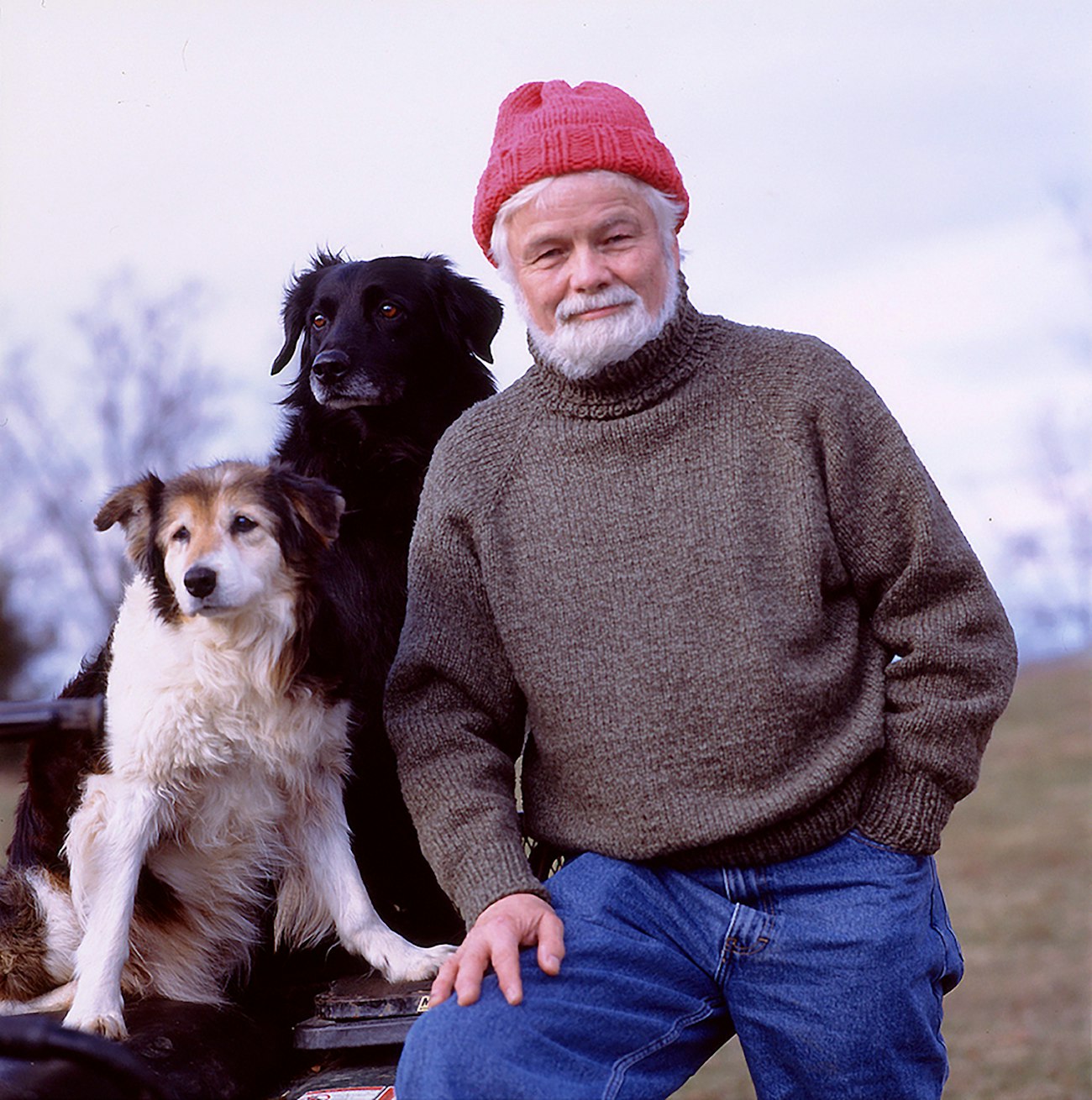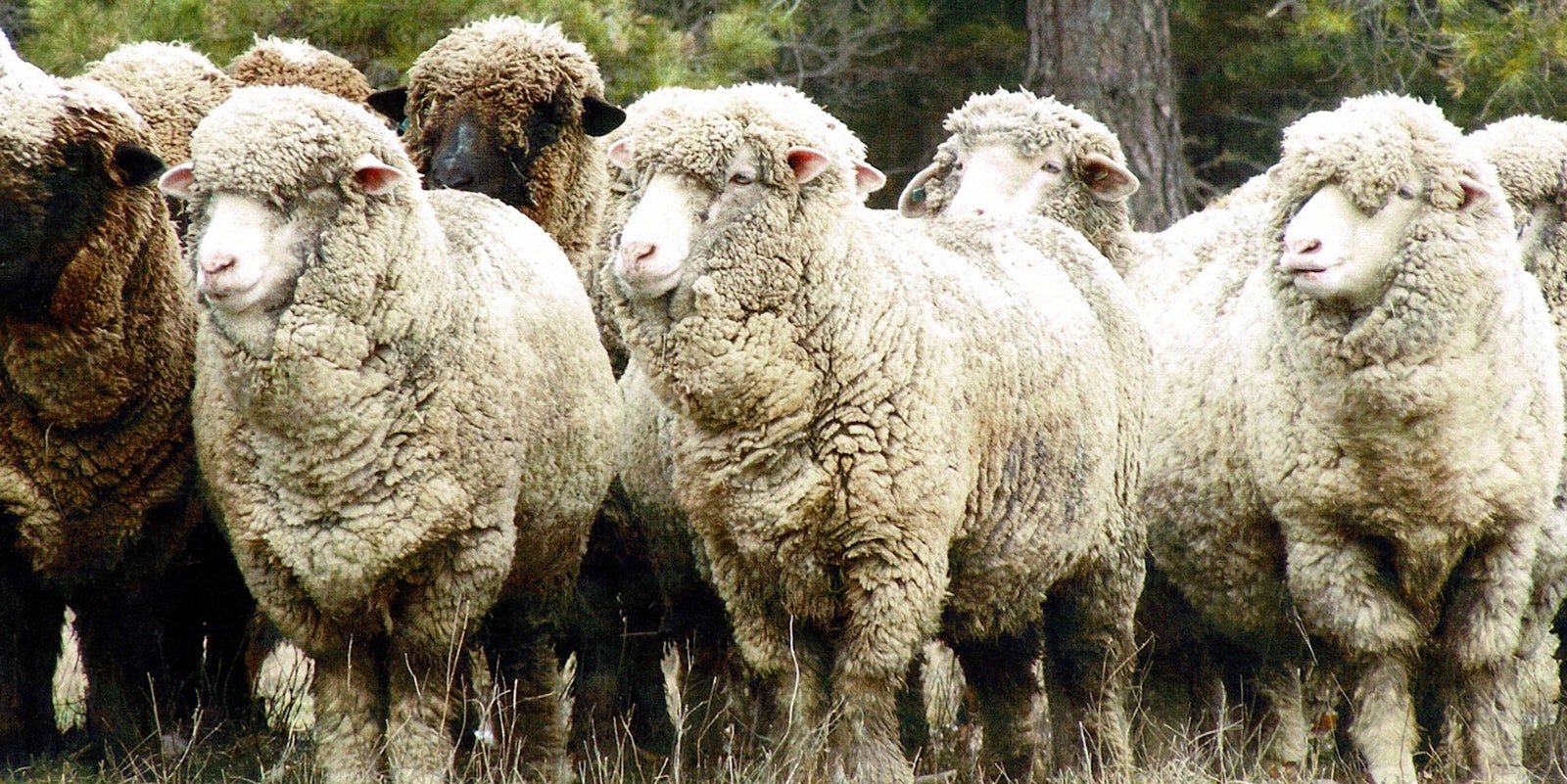Subscriber Exclusive
Morehouse Farm Merinos: A Pioneering Yarn Farm
The quest for a weekend getaway led two city-dwellers to an ambitious goal: to produce the finest wool in the United States.
The quest for a weekend getaway led two city-dwellers to an ambitious goal: to produce the finest wool in the United States. <a href="https://farmfiberknits.com/morehouse-farm-merinos-a-pioneering-yarn-farm/">Continue reading.</a>
https://farmfiberknits.com/cdn-cgi/image/format=auto/https://www.datocms-assets.com/101500/1703201278-photo-1-morehouse-merino-sheep-enlarged-header-crop.jpg?auto=format&w=900
In 1977, Margrit Lohrer and Albrecht Pilcher bought a 33-acre farm near the village of Milan, New York, about 10 minutes northeast of Rhinebeck. The Manhattan couple (she a graphic designer, he an architect) wanted a weekend getaway. They imagined they might someday retire to the farm and raise some animals.
As they considered what sort of animals they would raise, they quickly settled on Merino sheep. Margrit was a lifelong knitter, having been taught by her mother as a small child in Switzerland. They loved the idea of turning grass into knitting yarn. And research told them Merinos grew the finest, most valuable wool.
The Search for Fine Merinos
Finding Merino sheep proved more difficult than they anticipated. In the early 1980s, Merino sheep were not common in the Eastern United States. Wool prices were low. Merinos are relatively small and slow to mature, so they aren’t the first choice of farmers focused on raising sheep for meat.
SUBSCRIBER EXCLUSIVE
In 1977, Margrit Lohrer and Albrecht Pilcher bought a 33-acre farm near the village of Milan, New York, about 10 minutes northeast of Rhinebeck. The Manhattan couple (she a graphic designer, he an architect) wanted a weekend getaway. They imagined they might someday retire to the farm and raise some animals.
As they considered what sort of animals they would raise, they quickly settled on Merino sheep. Margrit was a lifelong knitter, having been taught by her mother as a small child in Switzerland. They loved the idea of turning grass into knitting yarn. And research told them Merinos grew the finest, most valuable wool.
The Search for Fine Merinos
Finding Merino sheep proved more difficult than they anticipated. In the early 1980s, Merino sheep were not common in the Eastern United States. Wool prices were low. Merinos are relatively small and slow to mature, so they aren’t the first choice of farmers focused on raising sheep for meat. [PAYWALL]In 1983, Margrit and Albrecht purchased a prize-winning Merino flock—three ewes and a ram—from a breeder in Ohio. Five months later, their first ram lamb was born.
 Snapshots from the early days show the origins of Morehouse Farm Merinos. Left, Margrit Lohrer with a Morehouse Merino ram. Right, three of the four original Morehouse Merino sheep.
Snapshots from the early days show the origins of Morehouse Farm Merinos. Left, Margrit Lohrer with a Morehouse Merino ram. Right, three of the four original Morehouse Merino sheep.
The Pilchers developed an ambitious plan to produce the finest Merino wool in the country. That meant careful selective breeding for fleece quality. When they attended an international sheep show in Canada, they came across the most beautiful wool they had ever seen: the fleece of a superfine Merino from Australia. Superfine Merino wool has a micron range of 16–17 microns, comparable to the softness of cashmere. In 1987, they imported two superfine Merino rams, whose progeny set the standard for high-quality American-grown Merino wool. Morehouse Farm Merinos was born.
 Since the early 1980s, Morehouse Farm has pursued an ambitious goal: to produce the finest wool in the country.
Since the early 1980s, Morehouse Farm has pursued an ambitious goal: to produce the finest wool in the country.
As the market for domestic fine wool grew in the late 1980’s, there was huge demand for the semen of the Pilchers’ imported rams as well as for ram lambs for breeding stock. Knitters were becoming aware of the qualities of breed-specific wools and beginning to seek out Merino wool yarn. By 1990, Margrit left the city behind and embarked on her new career as a wool farmer. Albrecht continued to commute for several more years. Over the years, new rams were introduced to the flock to maintain genetic diversity, always with a focus on producing the finest fleeces possible.
Colors, Kits, and Weights
For the first several years, Morehouse Farm sold only undyed wool. The flock contains both white and black sheep, so by blending the natural-colored wool, they created a palette of beautiful neutral shades. But then they began selling their yarn at the Greenmarkets in New York City. Surrounded by the vibrant colors of fresh produce, the soft cream, gray and brown of the yarn looked unimpressive. Margrit’s training as a graphic designer kicked in, and they began dyeing some of their yarn in bright hues that could hold their own against the fruit and vegetables. While Morehouse Merino is still available in a range of five natural colors, the bulk of the yarn is dyed in a rainbow of 118 solid, variegated, and handpainted colorways.
Market demand also drove them to diversify in the weights of yarn offered. Early on, Morehouse Merino wool was spun into sportweight and worsted-weight yarn—the kinds of yarn Margrit was accustomed to knitting. Customers asked for lace- and fingering-weight yarns. Morehouse Merino is now available in five weights from light fingering to super bulky.
 Naturally colored Morehouse Farm Merino yarn with Margrit’s 2006 book.
Naturally colored Morehouse Farm Merino yarn with Margrit’s 2006 book.
Along with expanding the yarn line, Margrit began to write knitting patterns. She designed a mix of simple, wearable, everyday garments, whimsical accessories, and classic home goods. Her book Morehouse Farm Merino Knits: More than 40 Farm-Fresh Designs was published in 2006. If you were reading knitting magazines in the 1990s, you probably remember seeing ads for the Morehouse Merino Alligator Scarf kit, which remains a bestseller.
Margrit Lohrer passed away in 2015, but Albrecht Pilcher continues to breed superfine American Merino sheep and produce wool yarn beloved by knitters.
 Albrecht Pilcher with Jet and Sage.
Albrecht Pilcher with Jet and Sage.
Morehouse Farm Merino yarns, patterns, and kits are available on the Morehouse Farm website and at fiber festivals in the eastern United States. The farm welcomes visitors to meet the sheep and shop in person on open farm days several times a year; dates are announced on their website.
Links
Morehouse Farm website
Alligator Scarf Kit
Originally published January 2, 2024. Updated June 30, 2025.


 Snapshots from the early days show the origins of Morehouse Farm Merinos. Left, Margrit Lohrer with a Morehouse Merino ram. Right, three of the four original Morehouse Merino sheep.
Snapshots from the early days show the origins of Morehouse Farm Merinos. Left, Margrit Lohrer with a Morehouse Merino ram. Right, three of the four original Morehouse Merino sheep. Since the early 1980s, Morehouse Farm has pursued an ambitious goal: to produce the finest wool in the country.
Since the early 1980s, Morehouse Farm has pursued an ambitious goal: to produce the finest wool in the country. Naturally colored Morehouse Farm Merino yarn with Margrit’s 2006 book.
Naturally colored Morehouse Farm Merino yarn with Margrit’s 2006 book. Albrecht Pilcher with Jet and Sage.
Albrecht Pilcher with Jet and Sage.